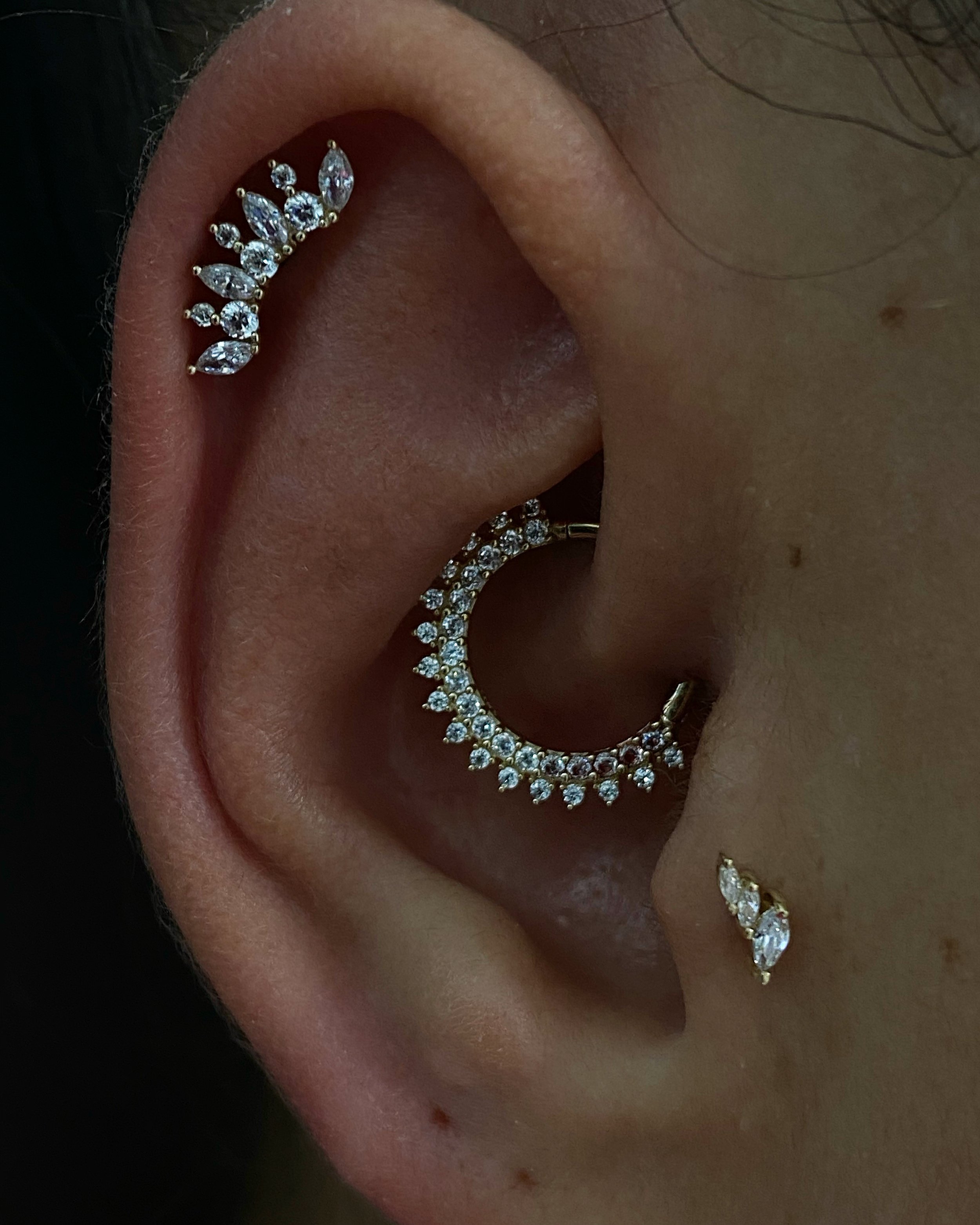Piercing Guide & Prices
Price List
starting from
Earlobe 50 €
Helix 50€
Orbital 50€
Daith 60€
Tragus 50€
Rook 50€
Industrial 60€
Conch 50€
Outter Conch 50€
Snug 60€
Forward Helix 50€
Upgrade -Replacing 20€
Nose Piercing 50€
Navel Piercing 60€
Nipple Piercing 50€
Lip Piercing 50€
Dermal Anchor 100€
Upgrade Or Replace 20€
Piercings Starting From 50€ (Basic Jewellery)
Titanium & 14kt Gold jewellery
Ear piercings guide
Lobe piercing – any standard piercing on your ear lobe
Helix piercing – a piercing on the outer cartilage rim of the upper part of the ear.
Forward helix piercing – a piercing on the outer rim of your ear at the top of the rim, just above the tragus.
Tragus piercing – A piercing on the inner piece of cartilage which sits over the ear canal directly above your ear lobe.
Anti tragus piercing – A piercing on the tiny bit of it of cartilage next to your lobe, opposite your tragus (explained above).
Snug piercing – A piercing that passes through the anti-helix of the ear and sits just above the anti tragus .
Rook piercing – A piercing at the top of the antihelix, on the other end of the cartilage rim from the snug.
Orbital piercing -This is any piercing where two holes are made on the same part of the ear.
Industrial piercing – Two or more piercings through the ear cartilage.
Daith piercing – A piercing at the end of the helix on the innermost part of the cartilage.
Getting an Ear Piercing
It's important to know that ear piercing guns are not an ideal tool for ear piercing. They're less of a danger with earlobe piercings than cartilage piercings, but piercing guns are inferior to Piercing Needles for all types of ear piercings. Piercing guns force a relatively blunt stud through the ear with great force, which can cause microscopic tears in earlobe tissue and potentially shatter ear cartilage. People who get their ears pierced with piercing guns have more trouble with infections, hypergranulations and other Ear Piercing Problems than those who get pierced with piercing needles.
Aftercare
The piercing should be kept dry as much as possible.
Always wash your hands before touching the piercing.
Don’t play with, rub, pick or scratch at a new piercing as this can lead to infections and extend the healing time.
When showering use an anti-bacterial soap on the piercing site.
After showering/bathing use a tissue or cotton bud to dry the piercing. Do not use a towel or a face washer.
Avoid swimming until the piercing has healed.
Some antiseptics, skin disinfectants, alcohol based cleaning solutions, tee tree oils skin cleaners can dry out the skin and result in prolonged healing times.
Do not share jewellery with friends.
Any problems return to the piercer or see your doctor
What Is Gold ?
14kt Or 18kt GOLD
In measuring gold, jewelry makers use the ‘karat’ grading system to designate purity. 24 karat is 100% pure, with lower karats (such as 18k gold and 14k gold) incorporating other metals for improved durability.
18k gold is about 75% pure gold, which makes it less durable than 14kt gold because it contains more pure gold.
18k/14kt Yellow Gold
Yellow gold is making a comeback today with its beautiful golden hue. 18k gold has more gold present than 14k and therefore the yellow-gold color is brighter and richer in appearance. Yellow gold is typically a mixture of pure gold, copper, and nickel, to give it its warm look. Yellow gold is the truest color of gold, and is the purest out of white, yellow, and rose gold.
18k /14kt White Gold
The most popular metal color for Jewelry is white gold, and there’s no question why! With a beautiful silvery appearance, this metal color is actually a mixture of metals such as silver,, and nickel. It’s also common for white gold to have a rhodium coating.


